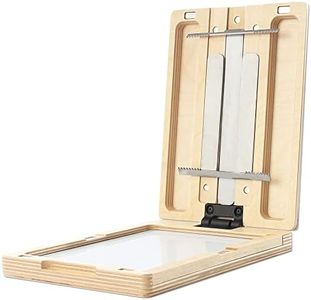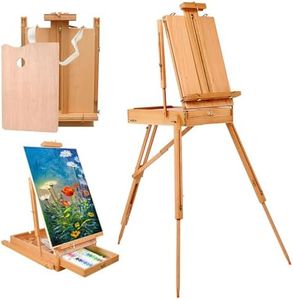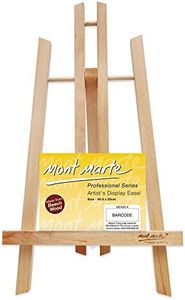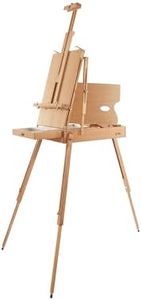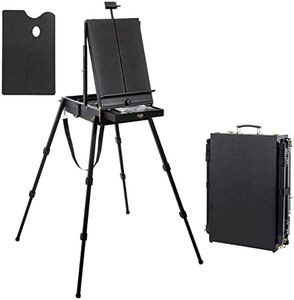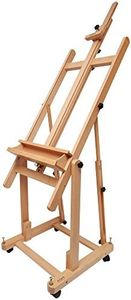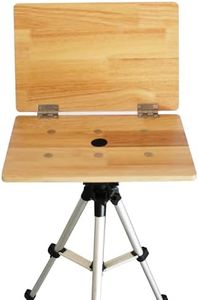We Use CookiesWe use cookies to enhance the security, performance,
functionality and for analytical and promotional activities. By continuing to browse this site you
are agreeing to our privacy policy
10 Best Plein Air Easels
From leading brands and best sellers available on the web.Buying Guide for the Best Plein Air Easels
Selecting a plein-air easel is all about matching your painting habits and environment to a piece of equipment that will support your creativity wherever you go. Plein-air easels are designed to be portable, lightweight, and sturdy, making them perfect for painting outdoors. It's important to look for features that will accommodate your preferred canvas size, handle varying weather conditions, and suit your transportation methods. A good plein-air easel will let you focus on painting, not fussing with equipment.Weight and PortabilityThis spec refers to how heavy the easel is and how easily it can be packed and carried, which is crucial for outdoor painting. Lightweight easels are easier to hike with and move around, while heavier easels tend to be more stable but harder to transport. Typically, easel weights range from ultralight (under 5 lbs), mid-weight (5-10 lbs), to heavier models (over 10 lbs). If you'll be hiking or traveling long distances, a lighter easel may be better, while short walks or painting near your car might allow for a heavier, sturdier option.
StabilityStability is about how well the easel stays put when you're working, especially in windy or uneven outdoor settings. More stable easels have strong, wider legs and well-designed locking mechanisms. You can find basic tripod models (least stable), hybrid or half-box models (moderately stable), and full box or French easels (most stable). If you paint with a heavy hand, use large canvases, or often paint in breezy places, prioritize a model with better stability.
Canvas/Panel Size CapacityThis spec tells you the maximum and minimum sizes of canvas or boards your easel can hold. Some easels are designed for small panels (up to 16 inches), while others can support large canvases (up to 34 inches or more). If you prefer painting on small surfaces, a compact easel will do, but if you like working large, look for one with higher capacity and more robust support arms.
AdjustabilityAdjustability refers to how the easel can be set up to suit different working positions, surface angles, and heights. Some easels allow for vertical or tilted setups, while others even offer horizontal positions for watercolor work. Easels with good adjustability let you work standing or sitting, and adapt to uneven ground. If you often change your painting style or location, more adjustability gives you flexibility for all environments.
Setup and Packing EaseHow quickly and easily you can set up and pack away your easel is especially important when you want to maximize your painting time or move locations frequently. Some easels unfold in seconds with simple locks, while others require more assembly and adjustment. If speed and simplicity matter to you—or if you’re new to plein-air—seek models known for quick, hassle-free setup.
Material and DurabilityThe material your easel is made of impacts its weight, weather-resistance, and lifespan. Common materials are wood (classic feel, heavier, may need maintenance), aluminum (lightweight, rust-resistant), and hybrid plastic/metal (light and low maintenance). If you paint in damp or coastal conditions, a rust-proof or weather-resistant model is wise. For the classicists, wood appeals aesthetically but will need more care.
Integrated Storage and FeaturesSome plein-air easels have built-in drawers, palettes, or brush holders, making it easier to carry your painting supplies in one unit. French-style easels and pochade boxes are examples. If you value convenience and organization, or if you want to minimize the number of separate items you carry, consider an easel with integrated storage and features.

